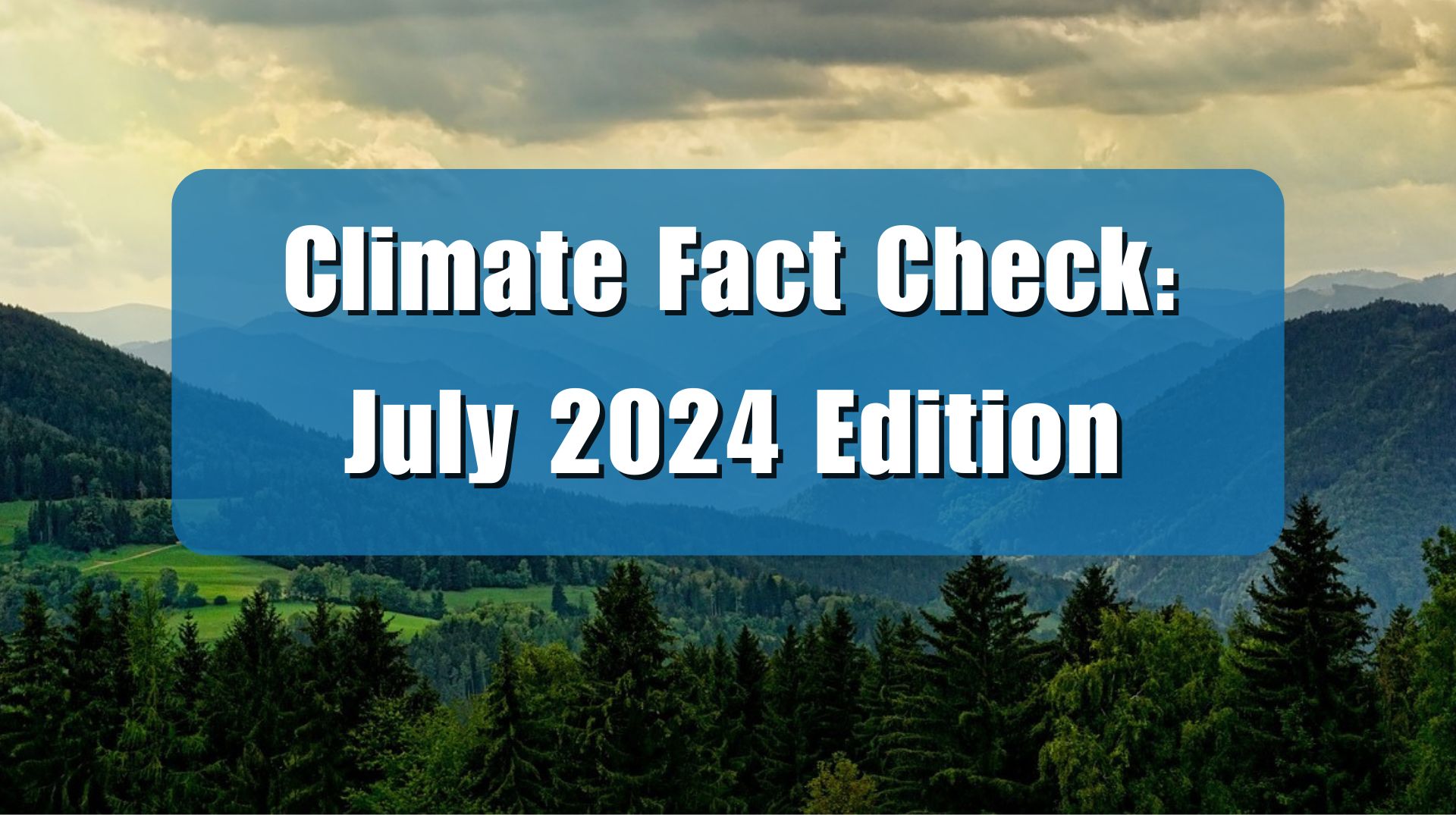After the recent devastating tornadoes in the Midwest and the southern United States, The Washington Post (WaPo) ran an article suggesting climate change is expanding the tornado season and the area over which tornadoes commonly form. This is false. Data refutes claims that tornadoes are increasing in number or severity, and tornadoes have never been limited solely to regions where they are most common, often referred to as tornado alleys.
In an article by Scott Dance titled Here’s what we know about how climate change is influencing tornadoes, Dance writes:
There is “ample evidence” of increasing tornado risks during less typically stormy seasons, for example, said John Allen, an associate professor of meteorology at Central Michigan University. This winter brought record tornado activity across much of the South.
And new research suggests that as average temperatures rise, the sorts of intense storms that frequently spawn tornadoes are becoming more common outside parts of the Midwest known as “tornado alley.” A recent study forecast that by 2100, the average annual number of supercells — massive, rotating storms known for producing the most severe tornadoes — to hit the eastern United States will increase by 6.6 percent.
First, despite more than 150 years of modest warming, data shows no trend in increasing tornadoes linked to climate change. Indeed, the Intergovernmental Panel on Climate Change (IPCC) said in its most recent report that “There is low confidence in observed trends in small spatial-scale phenomena such as tornadoes.”
Climate Realism has repeatedly refuted media assertions that climate change is causing an increase in the number of tornadoes or that warming is causing a shift in where tornados typically form, resulting in them occurring in areas previously unheard of, here, here, and here, for instance.
The WaPo article focused on the recent severe storms that caused death and destruction. Yet, looking at the actual data for the trend in violent tornadoes suggests a cause for celebration, not alarm. Violent tornadoes, those rated EF3 to EF5 on the enhanced Fujita tornado scale, have declined in recent decades, as shown in Figure 1, below.

WaPo writes:
Average global temperatures have risen more than 1.1 degrees Celsius (2 degrees Fahrenheit) since the late 1800s, and the impact is clear: Warmer air provides more energy for storms to develop and intensify, and holds more moisture, which can also fuel storms.
Warm, moist air is a key ingredient for developing severe tornadic storms.
This claim is misleading. As Climate at a Glance: Tornadoes points out:
Tornadoes typically form when very cold, dry air clashes with warm, humid air. Climate change warms the Arctic more than the tropics and subtropics, resulting in less of a clash between cold Arctic air masses and warm Gulf of Mexico air masses. As a result, fewer and less violent tornadoes are occurring today than in previous periods, despite media claims that tornadoes are getting more frequent, stronger, or both.
Additionally, in his attempt to tie tornadoes to climate change, evidence suggests that Dance ignored the fact that in the midst of the claimed “fourth warmest year ever,” attributed to climate change by WaPo itself, 2018 was an all-time record quiet year for tornadoes in the United States. WaPo even wrote about it in 2018 will be the first year with no violent tornadoes in the United States.
In fact, during WaPo’s so-called “hottest decade in recorded history,” two record-low years for tornado strikes in the United States occurred, in 2014 and 2018.
This leads one to ask, whether Dance unaware of WaPo’s previous articles on the topics of tornadoes and climate change, or did he simply not wish to consider what those articles implied, because the facts they presented were inconvenient to his attempt link climate change and tornado behavior.
Even the scientist quoted in the WaPo article, would not commit to the narrative that climate change was changing tornado behavior.
“That suggests more tornadoes may be likely, too,” wrote Dance, continuing, “But scientists aren’t ready to declare that yet.
“There is nothing concrete to say, ‘Yes, we’re going to see more tornadoes,’ Allen said,” as Dance reported.
Although Dance did provide some balance in the article, he ignored or was ignorant of the most important facts: hard data on tornado numbers and intensity, which refute any assertion tornadoes are worsening due to climate change. In point of fact, the number of tornadoes has declined for the past 45 years, and the number of strong tornadoes, F3 or higher, declined even more dramatically. The IPCC finds no evidence that climate change is impacting tornado trends, and two years which recorded historically low numbers for violent tornadoes occurred during the supposed “hottest decade in recorded history.”
The willful choice to ignore these facts by Dance, his editors, and WaPo’s fact checkers is indicative of the shoddy state of what passes for journalism at the WaPo today where, evidently, science dies in darkness.

















WaPo uses only narrative checkers, who are apparently very effective. 😉